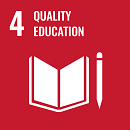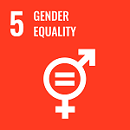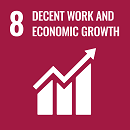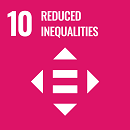MEGAPROJECT: BETTER TOGETHER
FOCUS AREA: THE INCLUSIVE LABOUR MARKET
CHALLENGE: Well-being at work
CHALLENGE DESCRIPTION:
This challenge focuses on well-being at the workplace, both mental, social and physical well-being. All three dimensions of well-being at the workplace are important in order to ensure a more inclusive labour market with reduced inequalities and better overall working life.
Despite efforts from politicians and workplaces, many employees still suffer from poor-working environment affecting their well-being and health negatively. In addition, employee absence due to work-related stress is an immense expense for workplaces themselves as well as for the public sector in terms of payment of sickness benefits.
One aspect of this challenge is therefore concerned with exploring ideas, current practices, policies, interventions and technologies that can improve the physical, social and psychological working environment in the public and private sector, and create better well-being at the workplace.
If our workplaces improve their physical or psychological working environment, we can expect positive impacts on employee satisfaction and commitment, employee health and well-being, organizational learning, and thus organizational economic sustainability and competitiveness.
This aspect of the challenge can focus on specific environmental or operational characteristics of the work place that negatively affect worker satisfaction, productivity and general wellbeing. For example, open-plan offices generally suffer from excessive noise, in which cognitive demanding work is negatively affected. How can these environments be monitored and arranged in order improve worker satisfaction and performance?
Manual work with repetitive motions can lead to injuries resulting in temporary sick leave or permanent disability. However, because these injuries occur gradually over time and as a cumulative effect of many small loads, it can be difficult to establish the cause of the problem and therefore difficult to select the right intervention to solve it. Many new technologies offer opportunities to collect physiological data over a working day and make informed assessments of the injury risk. Can such technologies prevent repetitive load injuries on the future, and precisely how?
Employee engagement and diversity is the an additional aspect that you may explore as part of this challenge.
For instance, ethnically diverse workplaces may experience obstacles when it comes to engaging workers in questions regarding organizational development, working environment and working conditions. Working with this challenge it is, for example, possible to explore means to increase employee engagement, or how employees, managers, or workplace representatives perceive engagement.
In other cases, some employees might feel excluded at the workplace, which can have detrimental consequences for their well-being. Workers may experience social isolation, lack of acceptance by colleagues or even bullying or harassment at the workplace. All social groups may experience workplace marginalization, but women, LGTB+ people, people with physical- or mental health problems or disabilities, ethnic and religious minorities are especially at risk of workplace exclusion affecting their well-being negatively. The challenge can also deal with how to avoid social exclusion and marginalization at diverse workplaces.
In this challenge, it is possible to collaborate with the external partner ALLIANCE+
IMPACTED SDGS:





Proposed project problem in collaboration with ALLIANCE+:
-
How is it possible to motivate employees to become shop stewards/staff representatives or occupational health and safety representatives in a multi-ethnic organization?
PROPOSED PROJECT PROBLEMS:
-
What is the relationship between organizational structure, management and well-being at the workplace?
-
In which ways can new technologies help improve the physical or psychological working environment?
-
Which wearable, ubiquitous or computational technologies can collect useful information about physical loads in the workplace, and how can this information be used to prevent injuries?
-
In which ways can managers successfully communicate about working environment question to their employees?
-
How could we achieve well-being and dignity at work?
-
How may we create physical spaces that improve well-being for employees from a diverse workforce?
-
How may we foster worker engagement in work-related questions in diverse workplaces?
-
Which policies and interventions are effective for promoting a good working environment and how can they be implemented effectively?
-
How is workplace exclusion perceived by the in-group and the out-group and which consequences does workplace exclusion have for the individual?
-
How can local safety and work environment councils facilitate employee well-being and which interventions are effective?
-
How can we prevent work-related stress?
-
Which role does sparetime job/after school jobs play in relation to health and work ability in later life, and how is it possible increase the number of young people with spare time jobs?
-
How does collegial fellowship affect employee sickness absence and the productivity of companies?
-
Why is sickness absence higher in the public sector than the private sector even when focusing on comparable job functions?
-
To what extend is there an association between the proliferation of social media and the level of stress related sickness absence?
-
Can nudging be used to increase the labour supply? For instance in terms of reduced sickness absence and later retirement?
CHALLENGE PROPOSER
Rasmus Lind Ravn
Politics and Society
rr@dps.aau.dk
CO-PROPOSERS
Morten Kyed
Sociology and Social Work
mkyed@socsci.aau.dk
Nikolaj Stegeager
Culture and Learning
nikolaj@hum.aau.dk
Lise Rolandsen
Politics and Society
lisera@dps.aau.dk
Pascal Max Madeleine
Health Science and Technology
pm@hst.aau.dk
